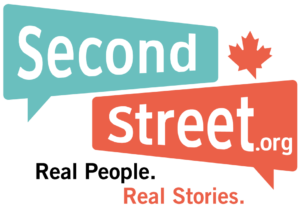TRUE NORTH COLUMN: Hungry for socialism? Well, socialism would leave you hungry.

While many low-income Canadians do sadly have trouble putting food on the table, and the price of food is climbing thanks to inflationary government policy, imagine how much worse things could be if Canadians listened to the promises of activists and academics who want our country to become socialist.
SecondStreet.org regularly speaks to Canadians who have immigrated from countries like the former Soviet Union, Venezuela, China, and more, for our Survivors of Socialism series of videos.
This is a diverse group of people – they look very different from each other, they speak different languages, some are older, some are younger, but they all seem to have some things in common.
Let’s go through a few quotes.
“You wake up thinking ‘what am I going to eat?’ and you go to bed thinking ‘what am I going to eat?’” – Aime Despaigne, Canadian from Cuba.
“We were always struggling. My parents always tried to make ends meet. So, if they could feed us a mouthful, they would be happy. I felt always hungry.” – Yali Trost, Canadian from China.
“I remember we had to line up sometimes two, three hours before they opened the (grocery) store. There could be a lineup for like a mile.” – Viorica Robinson, Canadian from Romania.
“If you were not ideologically orthodox, then your children and your family might suffer because they would not get enough food.” – Marco Navarro-Genie, Canadian from Nicaragua.
Three different continents, three different languages, thousands of kilometers in distance, and these Canadians all had that experience in common. Growing up, they were always hungry. So what’s the common thread? Socialism.
Interestingly enough, this isn’t a problem throughout the world. Gather a group of new Canadians from Ireland, Australia, Japan and Chile, and the odds are pretty good they would have had a childhood with a full stomach.
In socialist countries, the government gets the final say on food production. They run the farms and decide who gets how much food.
Sure, people can scrape by on government breadlines and go to the black market when needed, but the reality is that food is always on your mind when you live in a socialist country.
Well, unless you’re in government. Milovan Djilas, a Yugoslavian communist defector who had a working relationship with Josef Stalin, shared some of the Russian dictators’ eating habits in his book Conversations with Stalin.
“The variety of food and drink was enormous—with meats and hard liquor predominating,” Djilas wrote. “Everyone ate what he pleased and as much as he wanted; only there was rather too much of urging and daring us to drink and there were too many toasts.”
Less than a decade before this dinner Djilas had with Stalin, around 5 million Ukrainians starved to death under Stalin’s watch in the Holodomor.
Or look at China. In recent decades, the communist country has made several economic reforms, which have improved the lives of its citizens. (Though they’re still a brutal authoritarian regime.) But go back a few decades to dictator Mao Zedong’s Great Leap Forward. Any photo of Mao would show you that he wasn’t exactly a skinny man. He certainly ate his fill, but under his watch, somewhere between 30 and 45 million Chinese starved to death.
Famine for thee, but not for me. That’s the socialist way.
So next time you run across a college student who’s just read Marx and is hungry for socialism, show them this article and let them hear for themselves what it’s really like to live in a socialist country.
Because if they get their way and turn Canada into a socialist regime, they’ll be hungry in a much more literal way.
Dom Lucyk is the Communications Director with SecondStreet.org, a Canadian think tank.
This column was originally published in True North on September 28, 2024.
You can help us continue to research and tell stories about this issue by making a donation or sharing this content with your friends. Be sure to sign up for our updates too!


